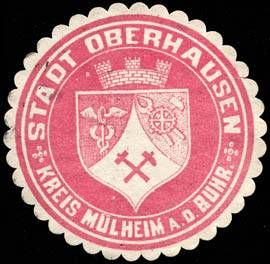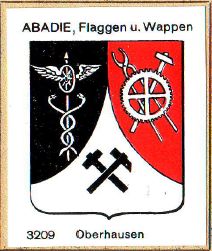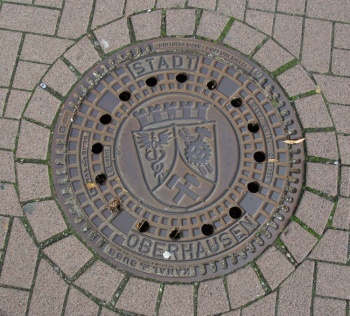Oberhausen: Difference between revisions
Jump to navigation
Jump to search
Knorrepoes (talk | contribs) m (Text replacement - "{{de}}" to "") |
Knorrepoes (talk | contribs) m (Text replacement - "{| class="wikitable"↵|+Official blazon↵|-↵|'''German'''↵| ↵|-↵|'''English''' ↵| {{blazon wanted}}↵|}" to "{| class="wikitable" |+Official blazon |- |'''German''' | blazon wanted |- |'''English''' | blazon wanted |}") |
||
| Line 13: | Line 13: | ||
|- | |- | ||
|'''German''' | |'''German''' | ||
| | | blazon wanted | ||
|- | |- | ||
|'''English''' | |'''English''' | ||
| | | blazon wanted | ||
|} | |} | ||
Revision as of 07:15, 6 April 2023
OBERHAUSEN
State : Nordrhein-Westfalen
Urban District (Kreisfreie Stadt) : Oberhausen
Additions : 1910 Alstaden, 1929 Osterfeld, Sterkrade, (1909 Buschhausen; 1917 Holten, Schmachtendorf)
| German | blazon wanted |
| English | blazon wanted |
Origin/meaning
The arms were officially granted on October 21, 1952.
Oberhausen developed from a unimportant village to a large industrial town in the 19th century and became a city in 1874. The arms show the symbols for mining (hammer), trade (caduceus, staff of Mercure) and industry (tools and wheel).
The first arms were granted on February 29, 1888 by King William (I) of Prussia, showing the first quarter in black and white, the Prussian colours (see below).
| Seal from around 1900 |
Seal from around 1900 |
| The arms by Hupp in the Kaffee Hag albums +/- 1925 |
The arms in the Abadie albums |
| The arms in on a manhole cover (2013) |
Literature: Stadler, 1964-1971, 8 volumes.





